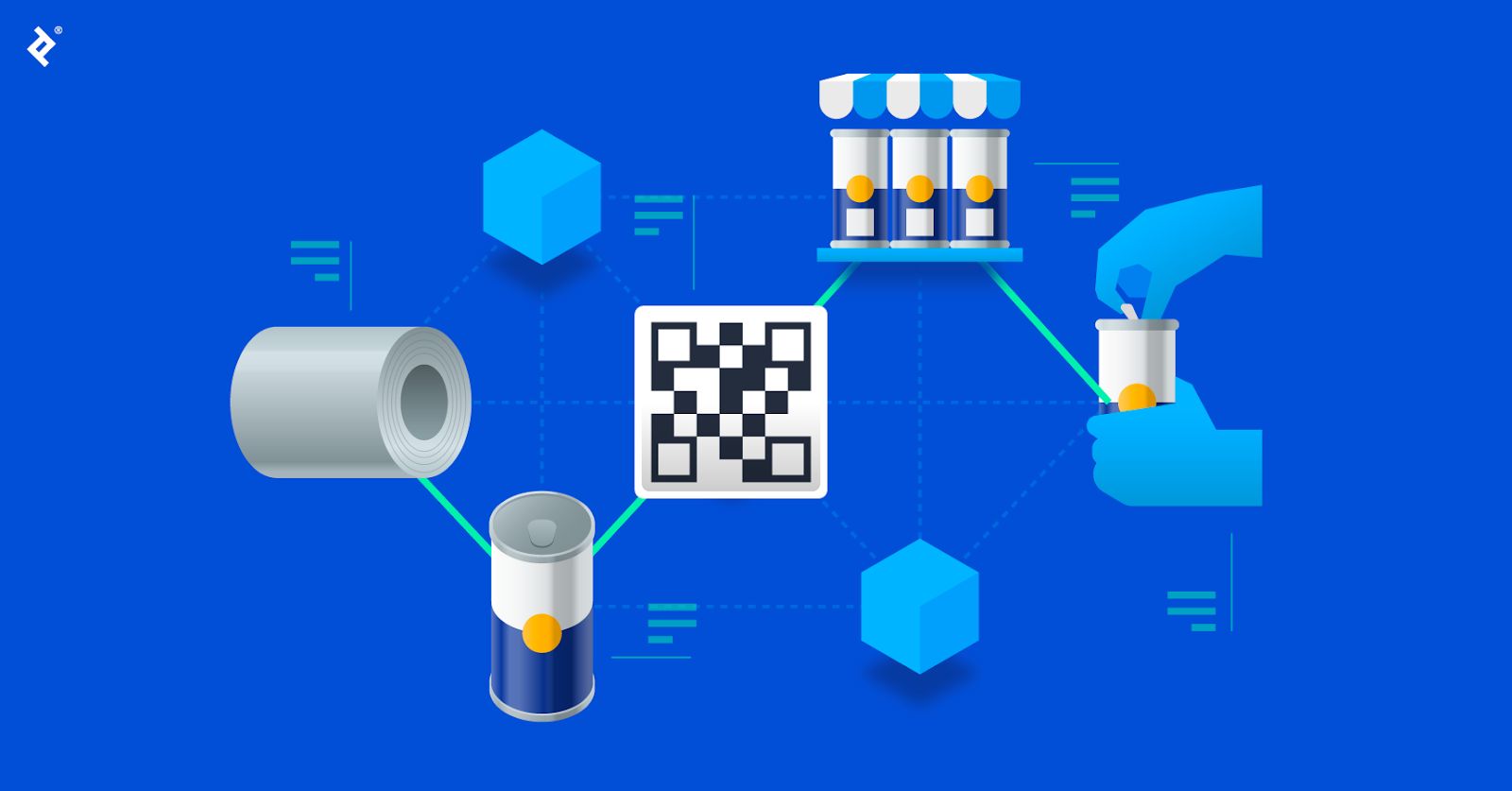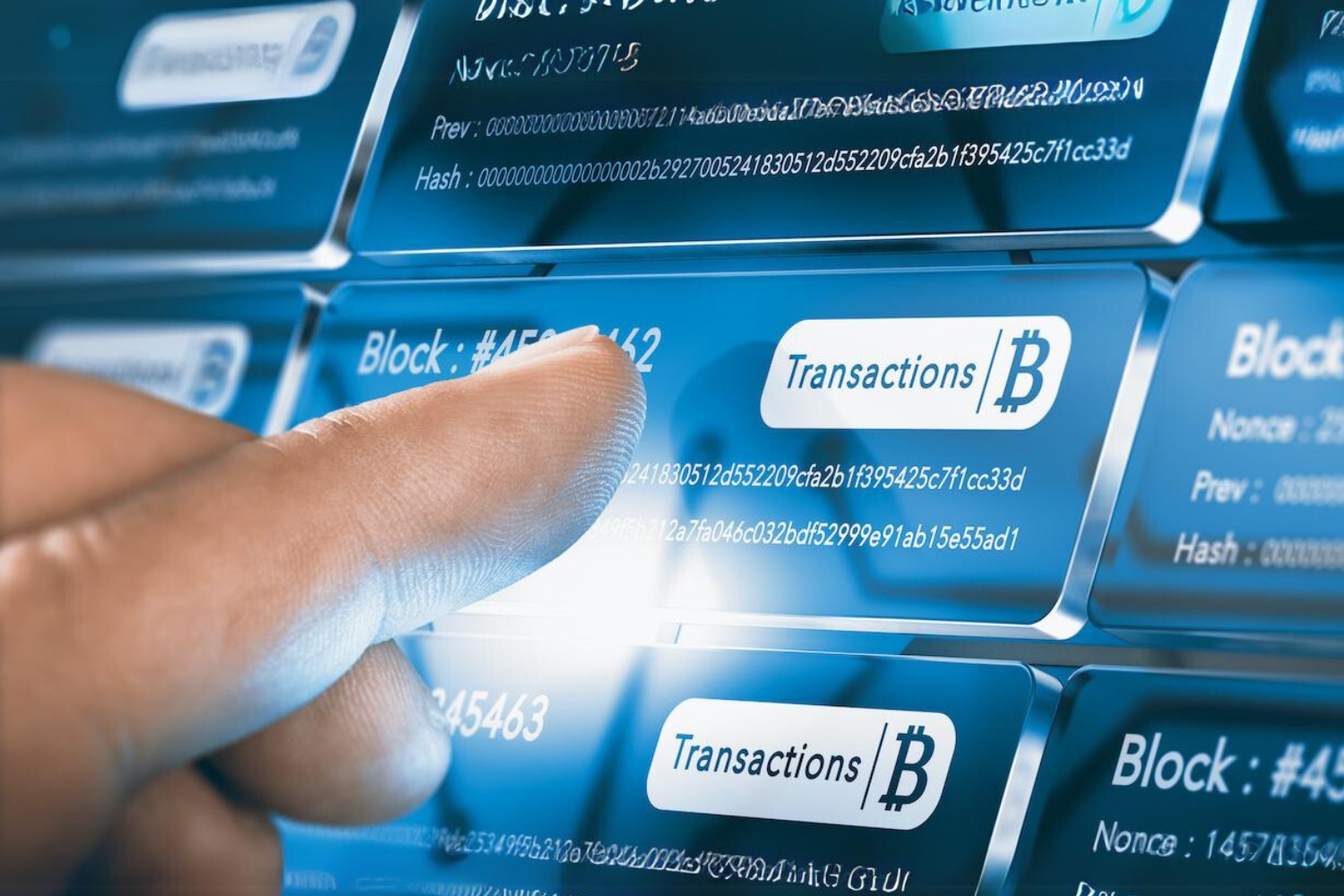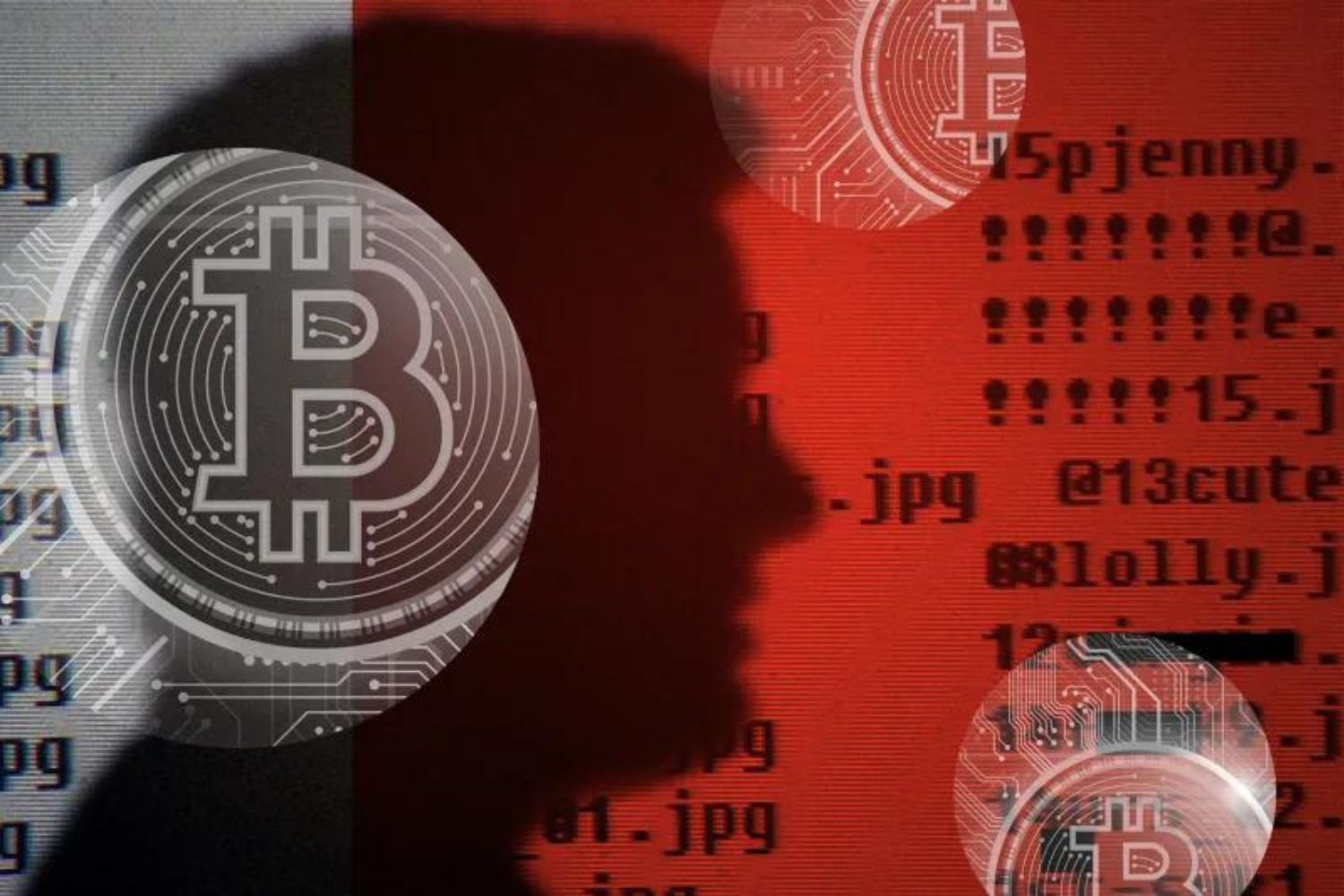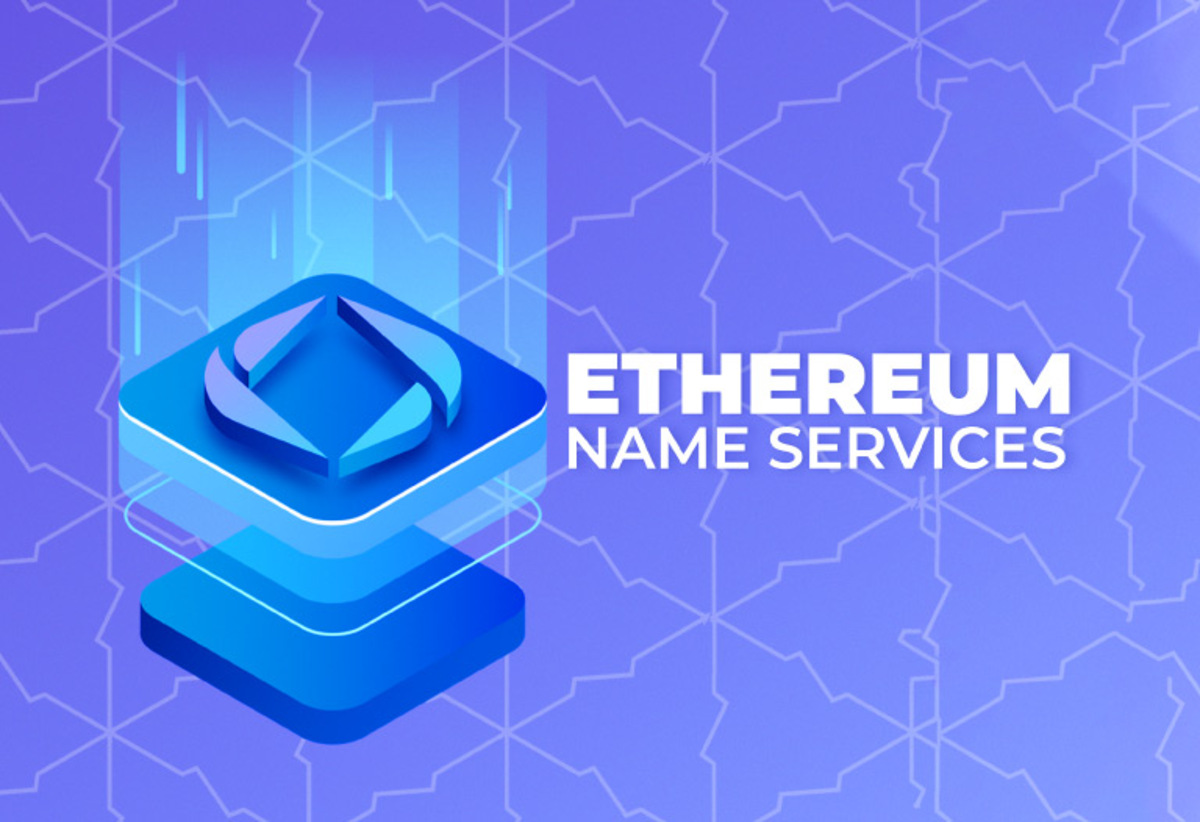Introduction
Welcome to the fascinating world of blockchain technology! In recent years, the blockchain has gained significant attention and has been hailed as one of the most groundbreaking innovations in the digital realm. While it promises increased security, transparency, and efficiency in various sectors, one intriguing aspect of blockchain technology is its immutability.
Unlike traditional centralized systems where transactions can be easily reversed or altered by a central authority, a transaction recorded on the blockchain becomes virtually unchangeable. This immutability is the cornerstone of blockchain’s security and trustworthiness.
But why can’t a transaction on the blockchain simply be reversed? Well, to understand this, we need to explore the fundamental principles that underpin the blockchain.
First and foremost, the blockchain is a decentralized and distributed ledger maintained by a network of computers, known as nodes. These nodes work together to validate and record transactions in a chronological order, forming a chain of blocks. Immutable records of these transactions are stored on every participating node, making it extremely difficult to tamper with the data.
Additionally, the blockchain relies on a consensus mechanism, such as Proof of Work (PoW) or Proof of Stake (PoS), to ensure agreement on the validity of transactions. This consensus is achieved through the efforts of miners who perform complex computational tasks to secure the network and validate transactions.
As a transaction is broadcasted to the network, miners compete to solve the cryptographic puzzle associated with the block containing the transaction. Once a miner successfully solves the puzzle, the block is added to the chain, and the transaction becomes confirmed.
Now, let’s delve deeper into the concept of confirmations and how they contribute to the irreversible nature of blockchain transactions.
Immutable Nature of Blockchain
One of the core characteristics that sets blockchain apart from traditional systems is its immutability. Once a transaction is recorded on the blockchain, it becomes extremely difficult, if not impossible, to alter or reverse it.
This immutability is achieved through a combination of cryptographic techniques and the decentralized nature of the blockchain.
When a transaction is initiated, it goes through a process of validation and confirmation by the network of nodes. Every transaction is bundled together with other transactions to form a block. This block, along with its unique hash, is then added to the chain.
Each block in the chain contains a reference to the previous block, creating a chronological sequence. This linking of blocks through cryptographic hashes ensures the integrity of the entire chain. Any tampering with a single block would invalidate all subsequent blocks, making it easy to detect any attempts at altering the transaction history.
Moreover, the blockchain is stored across multiple nodes participating in the network. Each node maintains a copy of the entire blockchain, making it incredibly difficult for any single entity to manipulate the data. In order to alter a transaction, an attacker would need to control the majority of the network’s computing power, known as a 51% attack, which is highly impractical and resource-intensive.
Additionally, blockchain networks often employ consensus mechanisms, such as Proof of Work or Proof of Stake, to ensure agreement on the validity of transactions. This means that the majority of nodes in the network have to reach a consensus and verify a transaction before it is considered confirmed and added to the blockchain. This consensus mechanism adds an additional layer of security and makes it even more challenging to reverse transactions.
While the immutability of the blockchain provides security and trust in the system, it also presents challenges in certain scenarios where transaction reversals may be necessary.
Next, we will explore the concept of consensus and the crucial role that miners play in ensuring the security and confirmation of transactions on the blockchain.
Decentralization and Consensus
Decentralization is a key principle of blockchain technology. Unlike traditional centralized systems controlled by a single entity, the blockchain operates on a decentralized network where no central authority has full control.
This decentralization ensures that power and decision-making are distributed among the network participants, making it more resistant to censorship, manipulation, and single points of failure. By removing the need for intermediaries, it enables peer-to-peer transactions and greater transparency.
But how does the decentralized blockchain network reach a consensus on the validity of transactions?
Consensus is the process by which the network agrees on the state of the blockchain. It ensures that all participating nodes reach a common understanding of the transaction history and that fraudulent or conflicting transactions are rejected.
There are different consensus mechanisms used in blockchain networks, such as Proof of Work (PoW) and Proof of Stake (PoS).
In a Proof of Work consensus mechanism, miners compete to solve complex mathematical puzzles. The first miner to successfully solve the puzzle gets to add the next block to the blockchain and receives a reward. This mechanism ensures that miners invest computational power and resources to secure the network and validate transactions.
On the other hand, Proof of Stake operates based on the stake that participants hold in the network. In this consensus mechanism, a validator is chosen to add the next block based on the number of coins they hold and are willing to lock as collateral. Validators are incentivized to act honestly as they have a stake in the network’s ongoing operation.
Regardless of the consensus mechanism, the role of miners or validators is crucial in maintaining the integrity of the blockchain. They validate the transactions, bundle them into blocks, and compete to add these blocks to the chain. Once a transaction is confirmed and added, it becomes increasingly difficult to reverse it due to the consensus achieved by the network.
Now that we have a clearer understanding of the consensus mechanism, let’s explore the concept of confirmations and finality in the blockchain network.
Role of Miners in Security and Confirmation
Miners play a crucial role in ensuring the security and confirmation of transactions on the blockchain. They are responsible for validating transactions, bundling them into blocks, and adding these blocks to the chain.
When a transaction is initiated, it is broadcasted to the network of nodes. Miners, equipped with powerful computational resources, compete to solve a complex mathematical puzzle associated with the block containing the transaction. This process is known as mining.
The first miner to solve the puzzle successfully adds the block to the blockchain and receives a reward, which is typically in the form of cryptocurrency tokens. This mechanism, known as Proof of Work (PoW), incentivizes miners to secure the network and validate transactions.
Miners’ primary role is to confirm the validity of transactions by ensuring that they adhere to the predefined rules of the blockchain protocol. They verify that the digital signatures are valid, the sender has sufficient funds, and there is no double spending, among other checks.
Once a transaction is included in a block, it receives its first confirmation. However, for added security, it is recommended to wait for several more confirmations before considering the transaction as finalized.
Confirmations represent the number of additional blocks that have been added to the chain on top of the block containing the transaction. The more confirmations a transaction has, the higher the level of trust and confidence in its validity.
Each subsequent block added to the chain after the transaction’s block increases the level of security, as altering a transaction would require modifying all subsequent blocks, which becomes exponentially more difficult as the confirmations accumulate.
Consequently, the more confirmations a transaction has, the more finalized and irreversible it becomes. This is why high-value transactions, such as large financial transactions or real estate purchases, often require a higher number of confirmations to ensure the transaction’s validity.
It is important to note that the time needed to achieve confirmations can vary depending on the blockchain network. Bitcoin, for example, has an average block time of 10 minutes, meaning it takes approximately 10 minutes for a new block to be added to the chain.
By relying on miners to secure the network and confirm transactions, the blockchain ensures the integrity and immutability of the transaction history. However, this also means that reversing or altering a transaction becomes increasingly difficult once it has been confirmed and added to the blockchain.
Next, we’ll dive into the double spending problem and how the blockchain solves this long-standing challenge.
Confirmations and Finality
Confirmations play a critical role in determining the finality and security of transactions on the blockchain. While a transaction may initially be included in a block and considered “confirmed,” it is important to understand that the level of trust and certainty increases with each subsequent confirmation.
When a transaction is included in a block, it receives its first confirmation. As new blocks are added to the chain, each containing a reference to the previous block, the number of confirmations for the transaction increases.
The general rule of thumb is to wait for a certain number of confirmations before considering a transaction as finalized or irreversible. The number of confirmations required can vary depending on factors such as the specific blockchain protocol and the value or sensitivity of the transaction being conducted.
For low-value transactions or situations where speed is a priority, a single confirmation may be deemed sufficient. However, for high-value transactions, it is recommended to wait for multiple confirmations to ensure a higher level of trust and security.
The reason for waiting for multiple confirmations is that each subsequent block that is added to the chain strengthens the security of the transaction. Altering or reversing a transaction would require modifying not only the block containing the transaction but also all subsequent blocks, making it computationally infeasible and highly unlikely.
As the number of confirmations increases, the probability of a transaction being altered or reversed decreases exponentially. This irreversibility is a fundamental characteristic of the blockchain, providing trust and immutability to the transaction history.
It is worth noting that the time required to achieve confirmations can vary depending on the blockchain network. Networks differ in their block time, which is the time it takes to generate and add a new block to the chain.
For example, Bitcoin has a block time of approximately 10 minutes, which means that it takes around 10 minutes on average for a new block to be added. Therefore, if a transaction has six confirmations, it would typically take around an hour for the transaction to be considered finalized on the Bitcoin blockchain.
By waiting for multiple confirmations and considering the number of confirmations required for finality, blockchain users can ensure a higher degree of trust and confidence in the validity of transactions. This level of security and irreversibility is what makes the blockchain a reliable and tamper-proof technology.
Next, let’s explore the challenges of reversing transactions on the blockchain and why it is regarded as a feature rather than a flaw.
Double Spending Problem
The double spending problem has long been a concern in digital transactions, especially in decentralized systems. It refers to the risk of spending the same cryptocurrency or digital asset more than once, essentially creating a counterfeit transaction.
In traditional centralized payment systems, the prevention of double spending is relatively straightforward as it is controlled by a trusted intermediary, such as a bank, which maintains a centralized ledger of transactions. However, in decentralized systems like the blockchain, where there is no central authority, addressing the double spending problem becomes more complex.
Fortunately, the blockchain solves the double spending problem through its decentralized structure, consensus mechanisms, and the concept of confirmations.
When a user initiates a transaction on the blockchain network, it is broadcasted to all participating nodes. Miners, or validators, then verify the transaction and its legitimacy by confirming that the sender has sufficient funds and that the transaction adheres to the predefined protocol rules.
Once a transaction is deemed valid, it is bundled together with other transactions in a block and added to the blockchain. This process ensures that the transaction is recorded only once and prevents any possibility of double spending.
Additionally, the decentralized nature of the blockchain introduces a mechanism called the longest chain rule. According to this rule, as miners continue to add new blocks to the blockchain, the longest chain is considered the valid one.
If an attacker attempts to double spend by creating a conflicting transaction, they would need to control the majority of the network’s computing power. This would allow them to create an alternative chain, separate from the main chain, where the double spending transaction is included. However, as long as the honest participants control the majority of the computing power, the main chain will continue to grow faster, rendering the attacker’s alternative chain irrelevant and invalid.
This is where the concept of confirmations comes into play. Each confirmation, represented by the addition of a new block to the chain, adds to the difficulty of altering or reversing a transaction. As more confirmations accumulate, the likelihood of a successful double spend diminishes exponentially.
The combination of decentralized validation, the longest chain rule, and the increasing number of confirmations make the blockchain remarkably resilient against the double spending problem. This ensures the integrity and security of transactions, making the blockchain a reliable solution for digital value transfer.
Now that we’ve explored how the blockchain addresses the double spending problem, let’s delve into the challenges associated with reversing transactions on the blockchain.
Smart Contracts and Self-Executing Transactions
One of the most innovative features of blockchain technology is the concept of smart contracts. Smart contracts are self-executing contracts with the terms of the agreement directly written into computer code. They automatically execute predetermined actions when certain conditions or triggers are met.
Smart contracts enable the automation and decentralization of various business processes, removing the need for intermediaries and enhancing efficiency and transparency. They operate on the principle of “code is law,” meaning that the terms and conditions outlined in the smart contract are followed without relying on trust between parties.
When a transaction involves a smart contract, the execution of the contract’s code is triggered by the occurrence of specific events or conditions recorded on the blockchain. This automated execution adds an additional layer of security and eliminates the possibility of human error or manipulation.
Once the conditions set in the smart contract are met, the actions specified within the contract are automatically executed. For example, if a smart contract is designed to release payment to a vendor once a product is delivered and verified, the payment will be automatically sent without requiring any manual intervention.
The self-executing nature of smart contracts brings added benefits in terms of transaction reversibility. While regular transactions on the blockchain may be difficult to reverse due to the immutability of the blockchain, smart contracts offer more flexibility.
Smart contracts can include built-in provisions for certain conditions or triggers that allow for transaction reversals or adjustments. For instance, if a buyer receives a defective product, a smart contract may have a mechanism to facilitate a refund or exchange. This allows parties to handle disputes or unexpected situations in a more streamlined and automated way.
However, it’s important to note that the ability to reverse transactions in smart contracts depends entirely on the design and implementation of the contract. While some smart contracts may include provisions for reversibility, others may be designed to be irreversible to ensure the integrity of the transaction.
Overall, smart contracts and their ability to execute predetermined actions based on coded conditions provide a powerful tool for automating contractual agreements. They offer the potential for more secure, efficient, and transparent transactions, while also accommodating certain circumstances that may require reversibility or adjustment.
Now that we have explored the concept of smart contracts and their impact on transaction reversibility, let’s discuss the challenges associated with reversing transactions on the blockchain.
Challenges in Reversing Transactions on the Blockchain
While blockchain technology offers numerous advantages such as immutability, security, and transparency, the challenge of reversing transactions on the blockchain arises due to its fundamental design principles. The decentralized and immutable nature of the blockchain presents several challenges when it comes to modifying or reversing transactions.
Firstly, once a transaction is confirmed and added to the blockchain, it becomes part of a permanent and unalterable record. The distributed nature of the blockchain ensures that multiple copies of the transaction are stored across numerous nodes in the network. Modifying or reversing a transaction would require simultaneous changes to all these copies, which is practically impossible.
Furthermore, the consensus mechanism employed by blockchain networks necessitates agreement among a majority of nodes to validate and confirm transactions. Reversing a transaction would require overturning this consensus, which can only be achieved by obtaining control of the majority of the network’s computing power — a feat that is highly improbable and resource-intensive.
Additionally, the irreversible nature of transactions on the blockchain enhances security and trust in the system. When transactions cannot be easily reversed, it eliminates the risks associated with fraudulent chargebacks, counterfeit transactions, or other acts of manipulation. This strengthens the reliability and integrity of the blockchain as a tamper-proof ledger.
However, there are certain scenarios where transaction reversibility could be beneficial, such as in the case of erroneous transactions, fraudulent activity, or disputes between parties. In these cases, the challenge lies in finding alternative solutions or workarounds to rectify the situation.
One approach is to implement mechanisms within smart contracts that allow for dispute resolution or reversibility. Smart contracts can include predefined conditions or triggers that would enable parties to address and mitigate potential issues without compromising the immutability of the blockchain.
Another possibility is to establish off-chain arbitration or mediation systems that can intervene in case of disputes and provide a resolution that is mutually agreed upon by the involved parties. These external mechanisms can work in conjunction with the blockchain to facilitate reversals or adjustments when necessary.
Ultimately, the challenge of reversing transactions on the blockchain stems from the inherent characteristics that make it secure and reliable. Striking a balance between immutability and the need for occasional reversibility seeks to address these challenges and ensure the blockchain’s potential application in various real-world scenarios.
As blockchain technology continues to evolve, innovative solutions may emerge to address these challenges and provide mechanisms for reversible transactions without compromising the fundamental principles of decentralization and immutability.
Now, let’s conclude our exploration of the challenges associated with reversing transactions on the blockchain.
Irreversibility as a Feature, Not a Flaw
The irreversibility of transactions on the blockchain is often seen as a key feature rather than a flaw. While it can present challenges in certain situations, it is this very characteristic that provides the blockchain with its unparalleled security, transparency, and trustworthiness.
One of the primary benefits of irreversibility is the prevention of fraudulent activities, such as double spending and transaction manipulation. Once a transaction is confirmed and added to the blockchain, it becomes a permanent part of the immutable ledger, making it virtually impossible to alter or delete.
This feature brings a higher level of trust to transactions conducted on the blockchain. Unlike in traditional systems, where transaction reversals or chargebacks are possible, irreversible transactions on the blockchain ensure that once a transaction has been completed, it is final and cannot be easily undone without consensus from the network.
Moreover, irreversibility fosters accountability and enhances transparency. The public nature of the blockchain allows anyone to verify the transaction history and trace the flow of funds. This promotes trust among participants, as they have access to a verifiable record of all transactions, thereby reducing the need for third-party intermediaries or auditors.
Irreversibility also fosters innovation by enabling the development of decentralized applications and smart contracts. The ability to trust that transactions and agreements will be executed as programmed without the need for intermediaries or reliance on trust between parties opens up new possibilities for automated and efficient processes across various industries.
While there are situations where reversibility may be desired, such as in case of errors or disputes, it is crucial to strike a balance between the irreversible nature of transactions and the need for flexibility. This balance can be achieved through the implementation of mechanisms such as smart contracts with built-in provisions for reversibility or through off-chain dispute resolution processes.
Overall, the irreversibility of transactions on the blockchain is a fundamental feature that provides increased security, transparency, and trust in the digital realm. By eliminating the risk of fraudulent activities and ensuring accountability, irreversibility becomes a cornerstone of the blockchain’s utility and its potential to revolutionize various industries.
As blockchain technology continues to mature, innovative solutions may arise to address the challenges associated with irreversibility while preserving the trust and integrity of this groundbreaking technology.
Now, let’s bring our exploration of the blockchain’s irreversibility feature to a close.
Conclusion
In conclusion, the irreversibility of transactions on the blockchain is a core characteristic that provides security, transparency, and trust in the digital realm. The decentralized and distributed nature of the blockchain, coupled with consensus mechanisms and cryptographic techniques, ensures that once a transaction is confirmed and added to the blockchain, it becomes virtually immutable.
While this immutability presents challenges in certain scenarios, such as the need for transaction reversals or adjustments, it ultimately strengthens the reliability and integrity of the blockchain. It eliminates the risks associated with fraudulent activities like double spending and transaction manipulation, making the blockchain a tamper-proof and trustworthy technology.
Smart contracts, which allow for the automation of contractual agreements, provide a framework for self-executing transactions. While regular transactions on the blockchain may be difficult to reverse, smart contracts offer flexibility by incorporating mechanisms for dispute resolution or reversibility when necessary.
Although the irreversibility of blockchain transactions may present challenges in specific situations, it is crucial to consider the benefits it brings in terms of security, transparency, and accountability. By ensuring the integrity of the transaction history and eliminating the need for trust in intermediaries, the blockchain revolutionizes the way digital transactions are conducted.
As blockchain technology continues to evolve and innovate, solutions may emerge to address the challenges associated with reversibility without compromising the fundamental principles of decentralization and immutability.
Overall, the irreversibility of transactions on the blockchain is not a flaw, but rather a feature that enhances the reliability, integrity, and trustworthiness of this groundbreaking technology. Understanding and embracing this feature will pave the way for the widespread adoption of blockchain across various sectors, revolutionizing the way we engage in digital transactions and contract enforcement.
Thank you for joining me on this journey to explore the irreversibility of transactions on the blockchain.

























